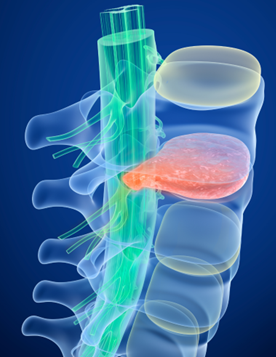
INJURY BLOG: DISC BULGE
Bulging discs, disc prolapse, slipped disc, herniated disc…do any of these terms sound familiar? Your spine contains spongy, cushion-like discs between each vertebra. These spinal discs (also known as intervertebral discs) provide shock absorption, while also keeping the spine stable and allowing the vertebrae to move. They are a common cause of back pain when they become strained and irritated. This is known as a bulging or prolapsed disc. Read on to learn about the types of bulging discs and their associated symptoms!
Anatomy of spinal discs
Spinal discs have an outer shell (annulus fibrosis) and an inner jelly-like substance (nucleous pulposus). The outer shell keeps the jelly in place. Spinal discs can withstand lots of pressure and load but sometimes they become irritated and the contents push out. This is known as a disc bulge, or disc herniation.
A bulging disc is most common in the lower back (lumbar disc prolapse) or the neck (cervical disc prolapse). This is because they are the most mobile parts of the spine that have the most wear and tear. Bulging discs are very rare in the thoracic/mid-spine.
What are the symptoms of a disc bulge?
A prolapsed disc can put pressure on the spinal cord and surrounding nerve roots, leading to inflammation and swelling in the area. This can put pressure on a nerve and lead to a person feeling pain, numbness, pins and needles, or weakness in one or both legs.
Sometimes a disc bulge does not have any symptoms and can go undetected. In severe cases the pain from a bulging disc can be unrelenting and interfere with everyday activities and impact your quality of life.
Some common symptoms of a disc bulge include:
- Back or neck pain, commonly on one side.
- Back pain that increases from sitting or bending.
- Sciatica – sharp pain extending from the buttock down the back of the leg. Caused by pressure on the nerve.
- Altered posture.
- Inability to stay in one position.
- Trouble standing.
- Pain when coughing or sneezing.
- Nerve pain or numbness and tingling.
Can chiropractic treatment help?
Yes, chiropractic care is often a preferred treatment because it is non-invasive. Chiropractic treatment can provide you with improved function and mobility, and reduced pain so that we can get you back to feeling your best.
When you first come to see us, we will talk to you about your symptoms, when they appeared and whether certain activities or movements make them worse. We will perform a thorough examination to ensure we correctly diagnose and treat your body. This may involve checking where your pain is located, your posture, and range of motion.
We will then develop a treatment plan that may include spinal manipulation and other chiropractic techniques to treat your bulging disc symptoms. The treatment approach will vary between individuals but may include manual therapy, and exercises to improve your strength and mobility.
We aim to restore your mobility and function so you can move freely without pain. We know how debilitating chronic back pain can be!
If you are experiencing back or neck pain and need help to manage it, then give us a call on (02) 9523 9940 or email info@baysidechiropractic.com.au to book your appointment!
